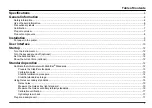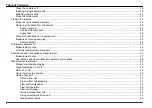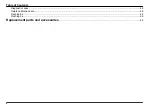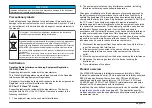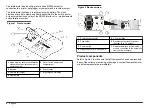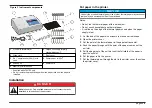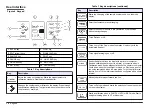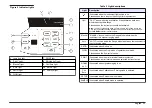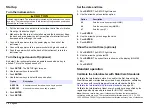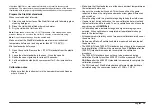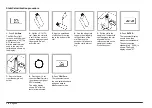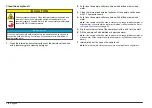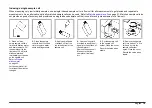
N O T I C E
Indicates a situation which, if not avoided, may cause damage to the instrument.
Information that requires special emphasis.
Precautionary labels
Read all labels and tags attached to the instrument. Personal injury or
damage to the instrument could occur if not observed. A symbol, if noted
on the instrument, will be included with a danger or caution statement in
the manual.
This symbol, if noted on the instrument, references the instruction
manual for operation and/or safety information.
Electrical equipment marked with this symbol may not be disposed of
in European public disposal systems after 12 August of 2005. In
conformity with European local and national regulations (EU Directive
2002/96/EC), European electrical equipment users must now return
old or end-of-life equipment to the Producer for disposal at no charge
to the user.
Note: For return for recycling, please contact the equipment producer or supplier
for instructions on how to return end-of-life equipment, producer-supplied
electrical accessories, and all auxiliary items for proper disposal.
Certification
Canadian Radio Interference-Causing Equipment Regulation,
IECS-003, Class A
:
Supporting test records reside with the manufacturer.
This Class A digital apparatus meets all requirements of the Canadian
Interference-Causing Equipment Regulations.
Cet appareil numèrique de la classe A respecte toutes les exigences du
Rëglement sur le matériel brouilleur du Canada.
FCC Part 15, Class "A" Limits
Supporting test records reside with the manufacturer. The device
complies with Part 15 of the FCC Rules. Operation is subject to the
following conditions:
1.
The equipment may not cause harmful interference.
2.
The equipment must accept any interference received, including
interference that may cause undesired operation.
Changes or modifications to this equipment not expressly approved by
the party responsible for compliance could void the user's authority to
operate the equipment. This equipment has been tested and found to
comply with the limits for a Class A digital device, pursuant to Part 15 of
the FCC rules. These limits are designed to provide reasonable
protection against harmful interference when the equipment is operated
in a commercial environment. This equipment generates, uses and can
radiate radio frequency energy and, if not installed and used in
accordance with the instruction manual, may cause harmful interference
to radio communications. Operation of this equipment in a residential
area is likely to cause harmful interference, in which case the user will be
required to correct the interference at their expense. The following
techniques can be used to reduce interference problems:
1.
Disconnect the equipment from its power source to verify that it is or
is not the source of the interference.
2.
If the equipment is connected to the same outlet as the device
experiencing interference, connect the equipment to a different
outlet.
3.
Move the equipment away from the device receiving the interference.
4.
Reposition the receiving antenna for the device receiving the
interference.
5.
Try combinations of the above.
Product overview
The 2100AN IS laboratory turbidimeter measures turbidity in FNUs
(Formazin nephelometric units), NTUs (nephelometric turbidity units) and
EBCs (European Brewing Convention units). NTUs and EBCs are
calculated using the conversion factors of 1.0 NTU per 1.0 FNU and
0.245 EBCs per 1.0 FNU. The 2100AN IS turbidimeter also measures
attenuation (FAU), absorbance and transmittance.
In addition, two user-defined measurement units can be specified. Refer
to
on page 42. The application specific
mode of operation uses the nephelometric optical system and the NTU
measurement mode.
English
7
Содержание 2100AN IS
Страница 1: ...DOC022 53 80206 2100AN IS 05 2014 Edition 4 User Manual...
Страница 2: ......
Страница 51: ......



